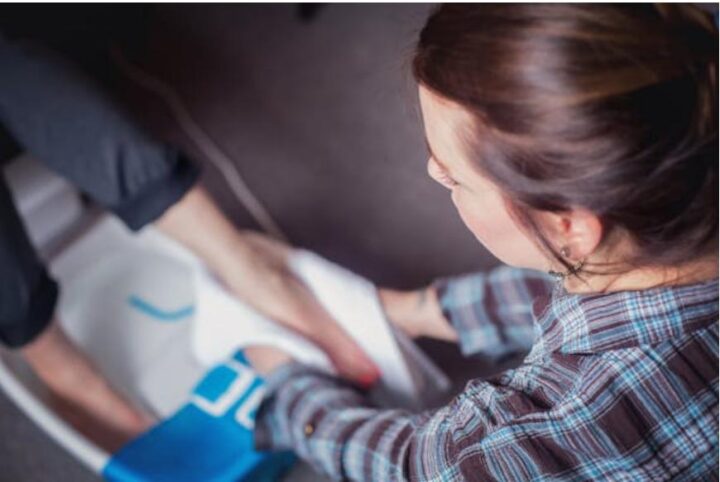The Role of Hygiene in Preventing Nail Infections
Nail infections are a common condition that can be painful and humiliating. In most instances, nail infections cause the nails to become thickened, brittle, and discolored, but they can also occasionally be painful or odorous.
Also, these infections are usually caused by fungi or bacteria, which thrive in warm, damp environments. Poor hygiene, excessive moisture, and unclean nail care tools can increase the risk of infection.
However, the silver lining is that you can avert such infections in their early stages using hygiene. Washing and drying your nails properly, properly trimming them, and keeping your feet and hands clean are sufficient to give you a great way to have healthy nails. Proper footwear and tools for not sharing also assist in preventing the spread of germs.
This article will explore hygiene’s important role in preventing nail infections.

1. Clean Nails Prevent Germ Buildup
Keeping your nails clean is one of the most effective ways to prevent infection. Your feet and hands touch countless objects throughout the day, collecting dirt, bacteria, and fungi. The germs prefer to hide between the nails, especially if you have long or dirty nails.
Over time, this accumulation can result in infection, staining, brittleness, and discomfort. Regular cleaning prevents harmful microbes from spreading.
Therefore, wash your feet and hands daily using soap and warm water, scrubbing around and under the nails. Use a soft nail brush to scrub in stuck-on dirt and bacteria.
Remember, it’s also important to dry your nails after washing, as it is an excellent place for infection to set in when there is stuck-in moisture. If you believe you have an infection, treat it immediately. Consider using fungal nail treatment to stop infection progression and return your nail health to normal.
Regularly trimming one’s fingernails is also a hygiene concern. Cut them straight across to prevent bacteria buildup and restrict painful ingrown fingernails.
2. Dry Nails Stop Fungal Growth
Fungi thrive in warm, moist areas, and dampened-up nails are a wonderful place to reside. Where there is trapped moisture around your nails—sweat, shoes that become damp, or not drying after washing—they present a wonderful set of conditions for a fungal infection to gain a hold.
Once an infection is established, it can quickly spread to produce thick, brittle, discolored nails. One of the most effective ways of preventing it is to maintain dry feet and hands.
After washing, always dry your nails thoroughly, particularly between the toes. Any residual moisture can result in fungal growth. If you tend to sweat a great deal, use socks that wick to maintain dryness, and frequently change socks throughout the day. Foot powder also helps to absorb excessive moisture.
Choosing breathable shoes is also essential. Leather or mesh shoes allow air to circulate in and out of shoes to help keep shoes drier. Soak shoes that get wet will let them dry completely before wearing them.
3. Proper Nail Care Prevents Infections
Taking care of one’s nails is more than keeping them clean—it is also paramount in infection prevention. Germs and fungi in unclean or used nail tools can be transferred to the nail, resulting in painful infections. Most individuals do not know that unclean nail clippers, files, or even a nail brush harbor disease-inducing microbes. Proper nail hygiene is, therefore, of paramount importance.
Always sanitize tools after use. Wash clippers and files in soap and water, and sterilize in rubbing alcohol afterward. If you receive a manicure or pedicure at a salon, ensure they use sterilized tools. Bringing a nail kit is a better option to avoid cross-infection. Do not share nail clippers, files, or scissors with anyone else, as they can transfer fungi and bacteria from one person to another.
Be mindful of artificial nails and polish, as these can hold in moisture and be a wonderful breeding ground for infection. If you already have a nail infection, avoid using polish until it is cured.
4. Healthy Skin Around Nails Blocks Germs
The skin around your nails serves as a barrier to help shield you from getting infections caused by bacteria and fungi. If this skin is compromised, even small cracks or breaks can be a point of entry for infection. Once germs penetrate, redness, swelling, and even painful nail infection can result.
So, keeping the skin around your nails in a healthy condition is just as crucial as keeping the nails clean. One of the most common causes of compromised skin is biting or picking at cuticles. Both of these tendencies create small wounds that allow entry for bacteria and fungi.
To prevent it, resist pulling on loose skin and not bite your nails. Gently cut or file hangnails using a cuticle scissor or a nail file. Moisturize your hands using cuticle oil or lotion to avert dryness and cracking.
If you cut or scald near a nail, wash it immediately in soap and water. An antiseptic applied to it can also be used to stop infection.
5. Early Treatment Stops Infections from Spreading
Even with hygiene, it is possible to get infections of the nails. The key is to diagnose them in time to avoid their severe consequences. If neglected, fungal infections can get deeper into the nail, making it harder to eliminate them. They can also infect neighboring nails and skin, causing more harm. The sooner you start treatment, the better you can manage the infection.
If you notice a thickening, a yellow hue, brittleness, or a deformed shape in your nails, do not ignore it. All of these point to a fungal infection in its early phase. Mild cases can be treated using over-the-counter creams, but a professional must treat more resistant cases.
One of the most helpful treatments is laser treatment, a new procedure that treats the infection without causing harm to the nail or the surrounding skin. Laser treatment is harmless, painless, and highly effective.
Final Thoughts
Good hygiene is responsible for preventing infection of the nails. Washing and drying the nails, using safe nail care methods, and protecting the surrounding skin all help to avert issues.
If an infection happens, treatment is key in its beginning phase. Correct maintenance of your nails today will keep them in a healthy and strong position in the future.


